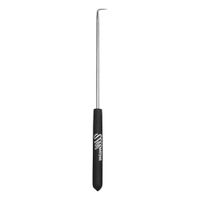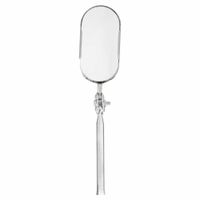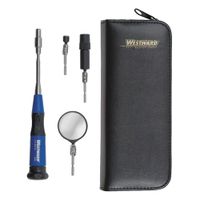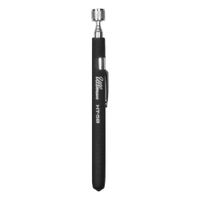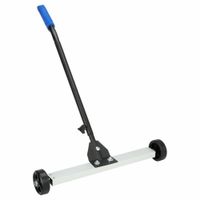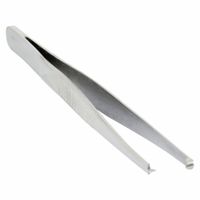Call +(254) 703 030 000 / 751 483 999 / 721 704 777
- Home
- Tools
- Hand Tools
- Inspection Retrieval Tools
.....Read More
Frequently Asked Questions
What are inspection and retrieval tools used for?
Inspection and retrieval tools are essential in various industries for ensuring quality, safety, and efficiency. These tools are primarily used for examining, assessing, and retrieving objects or data from environments that are otherwise difficult to access or analyze.
Inspection tools are used to examine and evaluate the condition, quality, or performance of an object or system. They are crucial in industries like manufacturing, construction, and maintenance, where they help identify defects, ensure compliance with standards, and prevent failures. Common inspection tools include borescopes, ultrasonic testers, and thermal imaging cameras. These tools allow for non-destructive testing, enabling the examination of materials or structures without causing damage.
Retrieval tools, on the other hand, are designed to recover objects or data from challenging or hazardous environments. They are often used in scenarios where direct human intervention is impractical or unsafe, such as in deep-sea exploration, space missions, or hazardous material handling. Examples include magnetic retrieval tools, robotic arms, and data retrieval software. These tools help in recovering lost or inaccessible items, ensuring the continuity of operations and minimizing downtime.
Together, inspection and retrieval tools enhance operational efficiency, safety, and reliability. They enable proactive maintenance, reduce the risk of accidents, and ensure that systems and processes function optimally. By providing detailed insights and facilitating the recovery of critical components or data, these tools play a vital role in maintaining the integrity and performance of various industrial and technological systems.
How do inspection mirrors work?
Inspection mirrors are tools designed to allow users to see areas that are difficult to view directly. They consist of a mirror attached to a handle, often telescopic, which can be adjusted to various lengths and angles. The mirror itself is usually mounted on a swivel joint, allowing it to be rotated and tilted to achieve the desired viewing angle.
The primary function of an inspection mirror is to reflect light from hidden or hard-to-reach areas back to the user's eyes. This is particularly useful in situations where direct line-of-sight is obstructed, such as under vehicles, behind machinery, or inside tight spaces. The mirror's reflective surface captures and redirects light, providing a clear view of the area being inspected.
Inspection mirrors come in various shapes and sizes, including round, rectangular, and oval, to suit different inspection needs. Some models are equipped with additional features like built-in LED lights to illuminate dark areas, enhancing visibility. The handles are often made of lightweight materials like aluminum or plastic, making them easy to maneuver and hold for extended periods.
In practice, the user positions the mirror at the desired angle and distance from the target area. By adjusting the handle and mirror angle, they can inspect the area without needing to physically access it, reducing the risk of injury or damage. This makes inspection mirrors invaluable in fields such as automotive repair, security, plumbing, and maintenance, where thorough visual inspections are necessary but direct access is limited.
What are the benefits of using tweezers in inspection tasks?
Tweezers offer several benefits in inspection tasks, particularly in fields requiring precision and attention to detail, such as electronics, jewelry, and laboratory work.
1. **Precision Handling**: Tweezers allow for the precise manipulation of small components or delicate materials, which is crucial in tasks like circuit board inspection or gemstone evaluation. Their fine tips can access tight spaces and handle tiny parts that fingers cannot.
2. **Enhanced Visibility**: By holding objects securely, tweezers enable inspectors to rotate and view items from various angles without obstruction, improving the thoroughness of the inspection.
3. **Reduced Contamination**: Using tweezers minimizes direct contact with objects, reducing the risk of contamination from oils, dirt, or moisture from the hands, which is essential in sterile environments or when handling sensitive components.
4. **Improved Control**: Tweezers provide better control over small or slippery items, reducing the likelihood of dropping or damaging them during inspection. This control is vital in tasks requiring steady hands and careful examination.
5. **Ergonomic Benefits**: Designed to reduce hand fatigue, tweezers can be used for extended periods without discomfort, which is beneficial in tasks that require prolonged focus and precision.
6. **Versatility**: Available in various shapes and sizes, tweezers can be selected to suit specific tasks, whether it’s handling flat, round, or irregularly shaped objects, making them versatile tools in inspection processes.
7. **Non-Magnetic Options**: For inspecting magnetic-sensitive components, non-magnetic tweezers prevent interference, ensuring accurate inspection results.
8. **Cost-Effectiveness**: Tweezers are relatively inexpensive tools that provide significant value in improving the efficiency and accuracy of inspection tasks, making them a cost-effective choice for many industries.
How do hooks and picks assist in retrieval tasks?
Hooks and picks are essential tools in retrieval tasks, offering precision and versatility. Hooks, with their curved ends, are designed to latch onto objects, making them ideal for pulling, lifting, or maneuvering items that are out of reach or embedded in tight spaces. They are particularly useful in scenarios where direct hand access is limited, such as retrieving items from deep containers, behind obstacles, or within machinery. The curvature of hooks allows for a secure grip on objects, reducing the risk of slippage and enhancing control during retrieval.
Picks, on the other hand, feature pointed or angled tips that are perfect for probing, prying, or extracting items from confined or intricate spaces. They are often used in tasks that require precision, such as removing small components, debris, or foreign objects from equipment or delicate environments. The fine tips of picks enable users to access narrow gaps and apply targeted force without causing damage to surrounding areas.
Together, hooks and picks complement each other by providing a combination of reach, grip, and precision. They are commonly used in various fields, including automotive repair, electronics, medical procedures, and archaeological excavations. In automotive repair, for instance, hooks can retrieve dropped bolts, while picks can remove seals or gaskets. In medical settings, they assist in surgical procedures by manipulating tissues or extracting foreign bodies.
Overall, hooks and picks enhance efficiency and safety in retrieval tasks by allowing users to access and manipulate objects with minimal effort and maximum control, thereby reducing the risk of injury or damage to both the user and the items being retrieved.
What is the difference between magnetic and claw pickups?
Magnetic pickups and piezoelectric (often referred to as "claw" pickups in certain contexts) pickups are two distinct types of transducers used in musical instruments to convert string vibrations into electrical signals.
Magnetic pickups are commonly used in electric guitars and basses. They consist of magnets wrapped with coils of wire. When a metal string vibrates above the pickup, it disturbs the magnetic field, inducing an electrical current in the coil. The characteristics of the sound produced by magnetic pickups depend on factors like the type of magnet (e.g., Alnico, ceramic), the number of windings, and the position of the pickup on the instrument. Magnetic pickups are known for their warm, rich tones and are sensitive to the type of strings used, as they require ferromagnetic materials to function.
Piezoelectric pickups, often referred to as "claw" pickups in some contexts, are typically used in acoustic instruments. They work by capturing the physical vibrations of the instrument's body or strings. Piezo pickups are made from materials that generate an electrical charge when mechanically stressed. They are usually placed under the bridge or saddle of an instrument. Piezo pickups are known for their ability to capture a more natural and acoustic sound, as they are not limited to metal strings and can pick up a wider range of frequencies. They are less sensitive to electromagnetic interference, making them suitable for acoustic environments.
In summary, the main differences lie in their construction, placement, and the type of sound they produce. Magnetic pickups are ideal for electric instruments with metal strings, offering a classic electric sound, while piezoelectric pickups are better suited for acoustic instruments, providing a more natural and detailed sound.
How do magnetic sweepers function?
Magnetic sweepers function by utilizing a strong magnetic field to attract and collect ferrous metal debris from various surfaces. These devices are typically composed of a housing unit that contains one or more powerful magnets, often made from materials like neodymium or ferrite, which are known for their strong magnetic properties. The housing is usually mounted on wheels or a handle, allowing the sweeper to be easily maneuvered over the area to be cleaned.
As the magnetic sweeper is moved across a surface, the magnetic field extends downward and outward, attracting metal objects such as nails, screws, bolts, and other ferrous debris. The metal pieces adhere to the bottom of the sweeper, effectively removing them from the ground. This process is particularly useful in environments like construction sites, parking lots, and warehouses, where metal debris can pose safety hazards or cause damage to vehicles and equipment.
Magnetic sweepers come in various designs, including push models, tow-behind models, and vehicle-mounted models, each suited for different applications and surface areas. Push models are manually operated and ideal for smaller areas, while tow-behind and vehicle-mounted models are designed for larger spaces and can be attached to vehicles like forklifts or trucks for more efficient sweeping.
To release the collected debris, many magnetic sweepers feature a quick-release mechanism. This mechanism allows the user to easily dispose of the accumulated metal by either lifting a handle or pulling a lever, which separates the magnets from the collected debris, causing the metal to fall into a designated disposal area.
Overall, magnetic sweepers provide an efficient, non-invasive method for maintaining clean and safe environments by effectively removing hazardous metal debris.
What should be included in an inspection and retrieval tool kit?
An inspection and retrieval tool kit should include a variety of tools and equipment designed to facilitate thorough examination and efficient retrieval of objects or materials in various environments. Key components include:
1. **Visual Inspection Tools**:
- Flashlights or headlamps for illumination.
- Magnifying glasses or portable microscopes for detailed examination.
- Inspection mirrors for viewing hard-to-reach areas.
2. **Measuring Instruments**:
- Tape measures and rulers for length measurements.
- Calipers and micrometers for precise dimensional analysis.
- Levels and plumb bobs for alignment checks.
3. **Retrieval Tools**:
- Magnetic pickup tools for retrieving metal objects.
- Claw grabbers or mechanical fingers for non-metallic items.
- Telescopic poles for extended reach.
4. **Recording Equipment**:
- Digital cameras or smartphones for photographic documentation.
- Notebooks or digital tablets for note-taking.
- Voice recorders for verbal observations.
5. **Safety Gear**:
- Gloves and protective eyewear.
- Hard hats and safety vests.
- Respirators or masks if necessary.
6. **Specialized Tools**:
- Endoscopes or borescopes for internal inspections.
- Thermal imaging cameras for detecting temperature variations.
- Ultrasonic testers for material integrity checks.
7. **Basic Hand Tools**:
- Screwdrivers, pliers, and wrenches for minor adjustments.
- Utility knives and scissors for cutting tasks.
- Hammers and mallets for impact needs.
8. **Storage and Organization**:
- A durable tool bag or case with compartments.
- Labels and markers for tool identification.
This comprehensive kit ensures readiness for a wide range of inspection and retrieval tasks, enhancing efficiency and safety.
